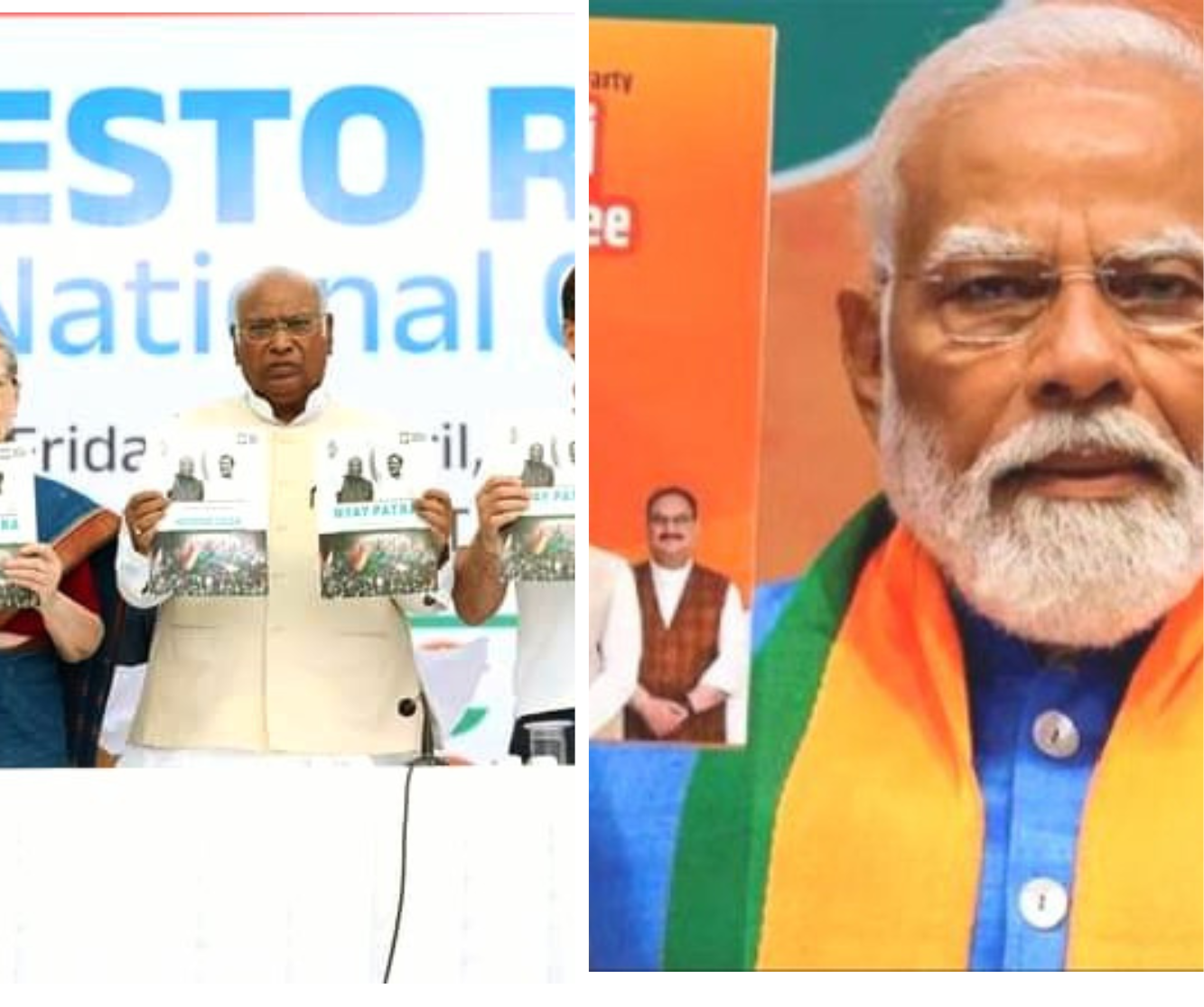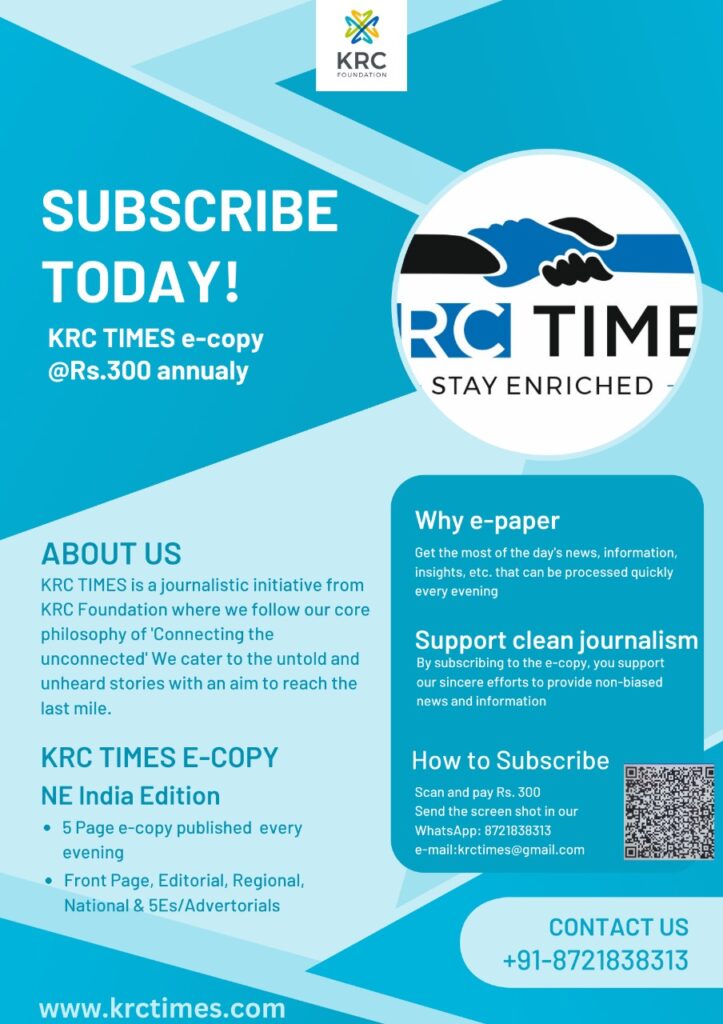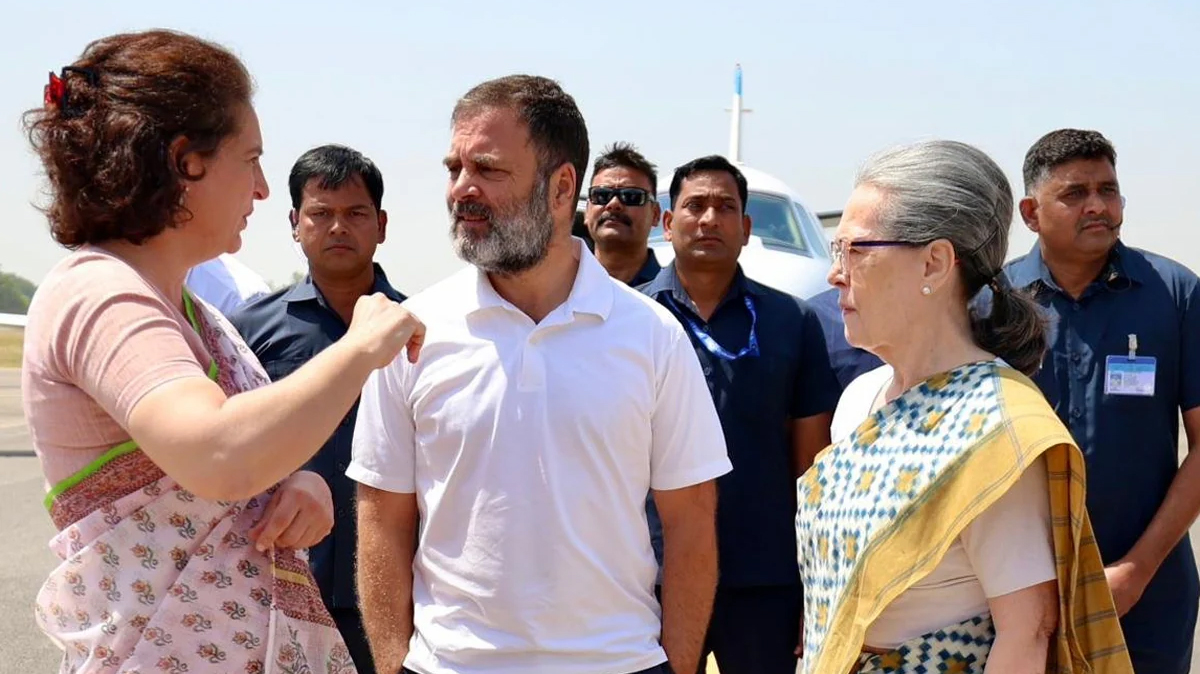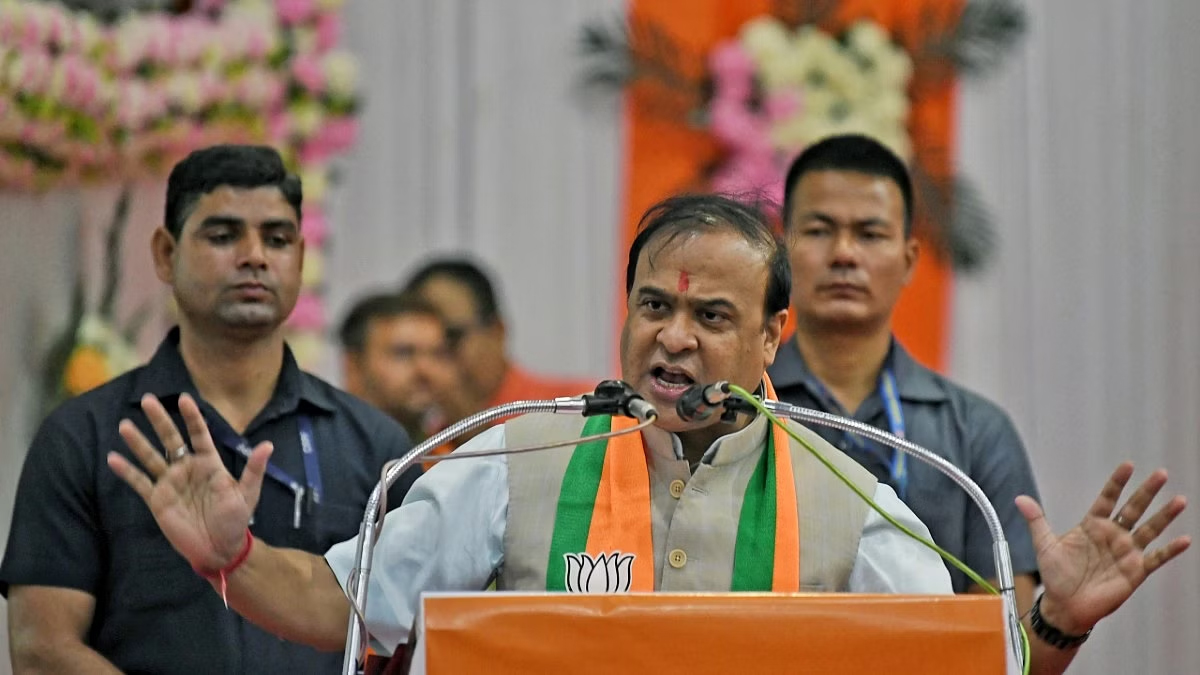The stage is set, audiences anticipate as the curtain rises on India’s nautanki of democracy, an ideological spectacle commencing Thursday with citizens either relishing or abhorring the ongoing tamasha with bagfuls of ‘revadi’ and promises galore. A toss between big leaders, small netas and two-timing jan sevaks. All in their reckless quest for power, amplified by the silly chair called Bharat’s Raj Gaddi!

The stage is set, audiences anticipate as the curtain rises on India’s nautanki of democracy, an ideological spectacle commencing Thursday with citizens either relishing or abhorring the ongoing tamasha with bagfuls of ‘revadi’ and promises galore. A toss between big leaders, small netas and two-timing jan sevaks. All in their reckless quest for power, amplified by the silly chair called Bharat’s Raj Gaddi!
Amidst the poll cacophony, BJP makes a pitch with Modi’s Guarantee for Viksit Bharat vs Congress Nyay Patra, an ideological divergence which mirrors India’s vibrant political tapestry.
The BJP’s ‘Sankalp Patra’ epitomises continuity by weaving a narrative of progress built upon the Party’s 10-year rule championing Hindutva, infrastructural advancements, national security and robust economic trajectory heralding stability, growth and steadfast commitment to a unified national ethos unswayed by populism.
In stark contrast, Congress’ ‘Nyay Patra’ heralds a clarion call for change, accentuating social justice and economic parity as its focal points. It promises inclusivity and welfare, caste census alongside redressing societal inequities, reservation and offers a progressive alternative to its rival’s vision. It pledges to fill three million Government vacancies and proposes a Constitutional amendment to increase the reservation cap. Harbinger of its own renaissance, it aspires to repaint the nation’s canvas with strokes of inclusivity and reform.
Undeniably, both manifestos underscore a clash of ideologies showcasing the vast ideological chasm between BJP-Congress. Whereby Bharat stands poised at a crossroads: a choice between two philosophies: ‘Sankalp’ and ‘Nyay’ which transcends mere manifesto promises; it defines divergent visions for the nation’s future. While BJP charts a vision of developed India, Congress advocates a narrative of societal equity and justice. Whoever wins will shape India’s developmental trajectory and its socio-political terrain for times to come.
The BJP’s manifesto stands as a bastion of cultural nationalism, envisioning a resurgent Bharat, self-assured and assertive. Conversely, the Congress manifesto echoes a clarion call for change, outlining a blueprint for an India where justice isn’t just an aspiration but a tangible reality for every citizen.
Interestingly, youth take centre stage in both Parties electoral agendas. BJP focuses on fortifying academic integrity, tackling paper leaks, filling Government vacancies and envisions India as a global manufacturing and start-up hub. Congress plans to introduce Yuva Nyay programme to combat unemployment, offering practical training through the Right to Apprenticeship Act for diploma holders and graduates under 25.
Both trading insults: BJP trashes Congress Nyay Patra as “having Muslim League imprint and is a bundle of lies,” Congress rubbishes BJP’s Sankalp Patra as a “warranty of jumlas and maafinama,” accusing it of dishonouring past promises. “In 2014 Modi promised to bring black money back, but what he brought is electoral bond.”
With BJP fulfilling two of its earlier three ‘core issues’: construction of Ram temple in Ayodhya and removing Article 370, implementation of a Uniform Civil Code (UCC) as a tool for “gender equality” — and the idea of “One Nation, One Election” have jumped to prominence today.
“Article 44 lists UCC as one of the Directive Principles of State Policy. BJP believes there cannot be gender equality till Bharat adopts UCC, which protects the rights of women drawing upon the best traditions and harmonising them with modern times.”
The thematic connection of gender parity and customary laws that came in the way of this was drawn when Parliament passed the triple talaq ban law in 2017. Primarily, UCC aims at uniformity in personal laws, like marriage registration, child custody, divorce, adoption, property rights and inter-state property rights regardless of religious beliefs. Tribals, though have been kept out of its purview. A thought echoed by the Supreme Court in various judgments.
BJP is clear: It believes no country should have any religion-based law other than a single law for citizens. It provides protection to vulnerable sections and religious minorities, while encouraging nationalistic fervour through unity.
Naturally, Opposition opposes this as it would interfere in religious groups personal laws and right of religious freedom unless religious groups are prepared for change (sic). It’s a ‘minority vs majority’ issue and Hindutva Brigade’s policy for Muslims living in India. It would disintegrate the country and hurt its diverse culture, they warn.
Moreover, it violates Constitutional freedom to practice religion of choice which allows communities to follow their respective personal laws. For example, Article 25 gives every religious group the right to manage its affairs and Article 29 the right to conserve its distinct culture. Also, the Constituent Assembly’s Fundamental Rights sub-committee deliberately did not include UCC as a Fundamental Right.
As the dissonance for and against UCC grows louder the correct answer lies somewhere in between. However, what cannot be denied is that UCC will benefit BJP electorally alongside the consecration of the Ram mandir as it will be used as a ploy to corner the Opposition about being pro-Muslim. A majority of Hindus would view it as the Party implementing its agenda.
Certainly the path to UCC is sensitive and difficult but it must be taken. A beginning has to be made if the Constitution is to have any meaning. Discrimination cannot be justified on the grounds of traditions and customs. One cannot progress riding on past’s wheels. India needs uniform laws and should figure out what is satisfactory to all groups.
On Modi’s favourite “One Nation, One Election”, the manifesto says “it will work towards implementing ex-President Kovind committee’s recommendations to holding simultaneous elections along with making provisions for a common electoral roll for all levels of elections.”
Especially as the country has witnessed 400 polls to Lok Sabha and State Assemblies till date. And given Law Commission had thrice — 1999, 2015 and 2018 — argued for simultaneous elections to “free citizens, Parties and Government from encumbrance of asynchronous elections as it would be economically viable and a big saving for exchequer”.
It would help avoid disruptions in governance and policy paralysis due to frequent polls as once a Party is elected and Government formed it can get down to work and concentrate on delivering good governance without worrying about its impact on vote banks.
Alas, the Opposition perceives it as an imposition of BJP’s political agenda, an extension of its ideological preference for homogeneity and uniformity vis-à-vis faith, customs, language, dress and diet given federal relations are fraught in rival-ruled States. Also, it hinders political accountability and performance scrutiny alongside disregarding citizens’ right to remove non-performing Governments.
The Congress, perhaps for survival and votes, has unleashed the caste genie after three decades to ensure social equality. It would be useful in formulating appropriate policies to target Government welfare schemes and policies ensuring they reach intended beneficiaries. BJP opposes this as distinction based on caste would inflame caste-based social and political sentiments and harm Hindutva nationalist project. Besides, widening the caste divide.
Woefully, our leaders need to see the Frankenstein they are planning to unleash. The past tells us that all clashes have been based on caste. From Bihar’s Thakur-Dalit violence in Belchi 1976, Punjab’s Jat-Sikh insurgency 1980-1990’s and Kashmir’s two-decades of continuing Hindus-Pandits ethnic cleansing by pro-Pak militants.
As our netas slug it out in the political quick-sands of electioneering the pendulum will swing from one end to the other, evaluating the fluctuating stock of Parties and candidates depending on their stock preferences. Clearly, an unpredictable poll turf lies ahead. Wait and watch — abhi khel baki hai dostoin!






